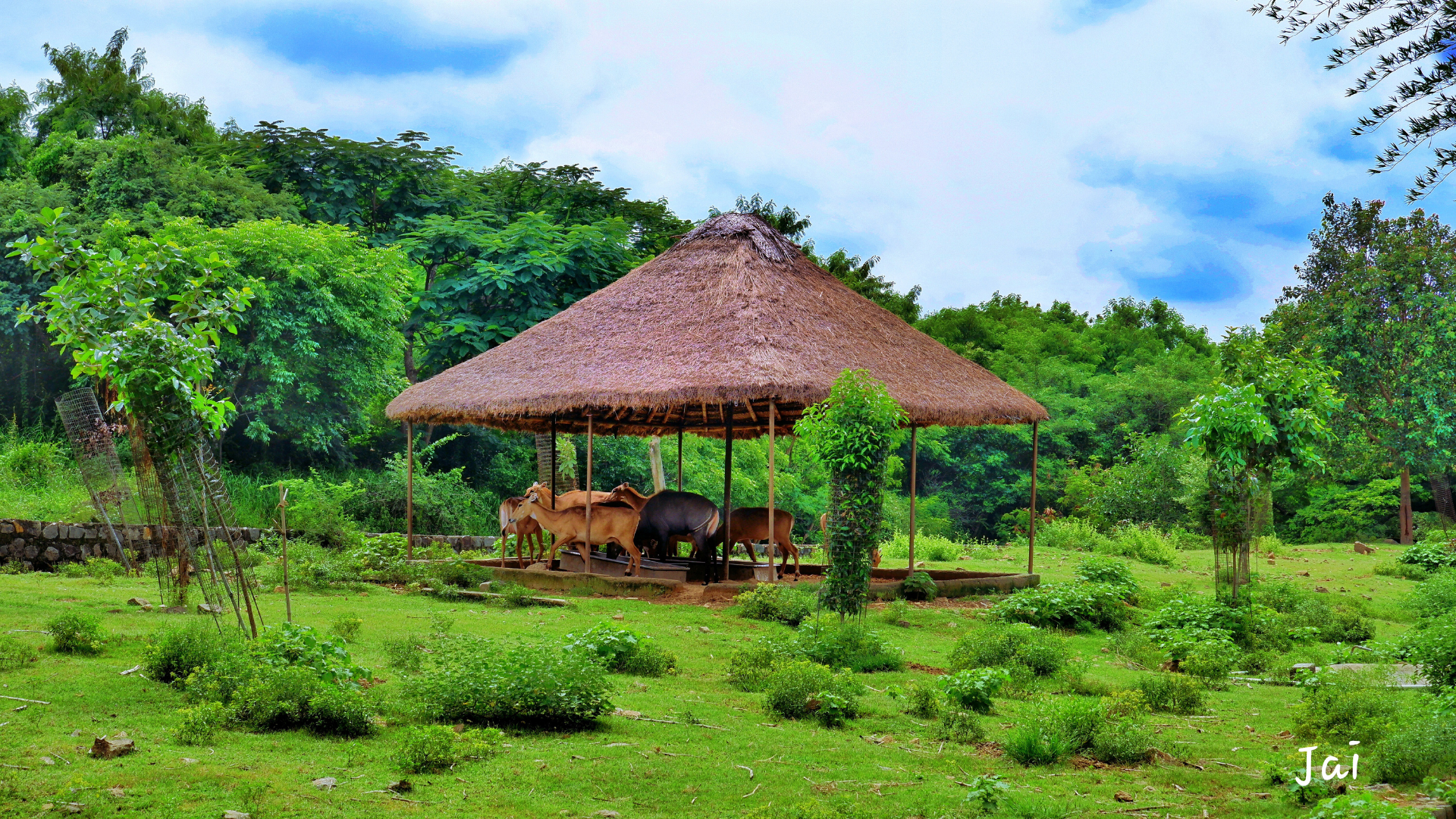
National parks serve as crucial sanctuaries for wildlife and plants, playing a significant role in global conservation efforts. These protected areas help preserve biodiversity by providing habitats where species can thrive without the pressures of urban development and pollution. Through a network of national parks, ecosystems can maintain their integrity, allowing flora and fauna to flourish across vast landscapes.
Furthermore, national parks contribute to climate resilience by protecting natural resources and regulating ecosystems. They act as carbon sinks, absorbing significant amounts of carbon dioxide, which helps combat climate change. Additionally, these parks safeguard water sources and soil quality, ensuring healthier environments for both wildlife and human populations.
Investing in national parks not only supports ecological balance but also fosters awareness about environmental preservation. By educating visitors on the importance of nature conservation, these parks inspire a collective responsibility towards protecting the planet.
The Role of National Parks in Conservation
National parks serve critical functions in conservation by preserving biodiversity, restoring ecosystems, and protecting endangered species. Their structured management and protected status enable a diverse range of plant and animal life to thrive.
Biodiversity Preservation
National parks play a crucial role in preserving biodiversity. They provide safe habitats for numerous species, allowing ecosystems to flourish without the pressures of urban development and pollution. This protected status ensures that native flora and fauna can thrive, maintaining genetic diversity essential for resilience against diseases and climate change.
These areas often encompass various ecosystems, from forests to wetlands, hosting species that are adapted to specific environments. Conservation efforts within these parks help mitigate habitat loss and fragmentation, which are significant threats to biodiversity. Additionally, research conducted in these settings enhances scientific understanding of ecological relationships and conservation strategies.
Ecosystem Restoration
Ecosystem restoration is a fundamental aspect of national parks. When natural areas have been degraded, park management often implements restoration projects directed at reclaiming and rehabilitating ecosystems. This includes removing invasive species, reintroducing native plants, and restoring natural water flows.
Such initiatives not only aim to revive the natural landscape but also restore the ecological functions that support environmental health. Healthy ecosystems contribute to climate regulation, soil stability, and water purification, indirectly benefiting surrounding communities. By actively managing and restoring ecosystems, national parks contribute significantly to long-term environmental sustainability.
Protection of Endangered Species
National parks provide critical refuge for endangered species facing extinction. The establishment of these protected areas creates safe zones where vulnerable populations can recover without the threat of human encroachment. Management practices within parks often include monitoring species populations and implementing breeding programmes.
Successful conservation strategies in national parks have resulted in the resurgence of species such as the American bison and the grey wolf. Protected habitats facilitate the natural behaviours of these animals, including mating and foraging, which are essential for their survival. By focusing on preserving these vital populations, national parks are pivotal in global conservation efforts.
Challenges and Threats Faced by National Parks
National parks encounter various challenges that threaten their ecological integrity. These issues stem from climate change, habitat fragmentation, and the presence of invasive species. Addressing these factors is essential for effective conservation efforts.
Impact of Climate Change
Climate change affects national parks by altering ecosystems and species distributions. Rising temperatures can lead to shifts in plant and animal behaviour. For example, species may migrate to cooler areas, disrupting established habitats.
Changes in precipitation patterns also impact water sources and plant growth. This influences wildlife that depends on specific vegetation. Research indicates that many parks may see increased wildfire risk and more frequent extreme weather events.
Moreover, climate-related stress can hinder conservation efforts. With limited funding, parks may struggle to implement adaptive management strategies. Proactive measures and adequate resources are crucial for mitigating climate impacts.
Habitat Fragmentation and Loss
Habitat fragmentation occurs when larger habitats are divided into smaller, isolated sections. Urban development, agriculture, and roads contribute to this loss, negatively affecting biodiversity.
Isolated habitats can limit a species’ ability to migrate, find food, and reproduce. This can reduce genetic diversity, making species more vulnerable to diseases and environmental changes. National parks must manage these surrounding threats diligently.
Additionally, funding for wildlife corridors is essential. These corridors enable species movement, promoting genetic exchange and ecosystem resilience. Effective planning and stakeholder collaboration are crucial to address habitat fragmentation.
Invasive Species Control
Invasive species pose significant challenges to national parks. These non-native species compete with local flora and fauna for resources, often leading to population declines. For instance, invasive plants can overrun native habitats, while animals may disrupt food webs.
Controlling invasive species requires ongoing monitoring and resource allocation. Park managers must employ various strategies, including manual removal, chemical treatments, and public education. Failure to address invasives can lead to long-term ecological damage.
Funding for these initiatives is critical. Without sufficient resources, management efforts may be insufficient to combat the rapidly spreading threats that invasive species present. Continued research and collaboration are vital in developing effective control strategies.
Scientific Research and Monitoring
National parks serve as critical sites for scientific research and monitoring, providing valuable data that contributes to wildlife conservation and ecological health. These protected areas facilitate studies on wildlife behaviour, ecosystem dynamics, and climate change impacts.
Wildlife Studies
Research on wildlife within national parks is essential for understanding population dynamics and habitat requirements. Biologists track animal movements using GPS collars and camera traps, aiding in species conservation efforts.
Key studies focus on:
- Population Count: Estimating the number of individuals in a species and monitoring trends over time.
- Habitat Use: Identifying habitats crucial for breeding, feeding, and migration.
- Behavioural Patterns: Observing activities that indicate health, stress, or the effects of human interference.
These studies inform management practices aimed at preserving biodiversity within national parks.
Ecological Health Assessments
Ecological health assessments help gauge the overall condition of park ecosystems. Researchers survey flora and fauna, analyse soil and water quality, and monitor invasive species.
Components of ecological health evaluations include:
- Biodiversity Surveys: Documenting species richness and abundance to identify changes in ecosystems.
- Water Quality Testing: Assessing contaminants that may affect wildlife and plant communities.
- Invasive Species Monitoring: Tracking and managing non-native species that threaten native ecosystems.
Such assessments are integral in guiding conservation strategies and restoration efforts.
Climate Research
National parks are valuable for climate research, providing long-term data on environmental changes. Studies here allow scientists to observe how climate change impacts ecosystems directly and indirectly.
Important areas of focus include:
- Temperature and Precipitation Patterns: Monitoring changes that affect wildlife and plant life.
- Phenology: Examining shifts in seasonal behaviours, like flowering times or migration patterns.
- Carbon Sequestration Studies: Understanding how park ecosystems contribute to carbon storage and climate regulation.
This research is crucial for developing strategies to mitigate climate change impacts and preserve natural habitats.
Economic and Community Benefits
National parks provide significant economic and community benefits. These benefits range from boosting local economies through tourism to preserving cultural heritage, which together enhance community identity and resilience.
Tourism and Employment
National parks attract millions of visitors each year, creating substantial economic opportunities. For instance, popular parks in Alaska generate income through entrance fees, camping fees, and guided tours. This influx of tourists supports local businesses, including hotels, restaurants, and shops.
Employment opportunities also expand as parks necessitate staffing for visitor centres, maintenance, and ranger services. According to the National Park Service, jobs linked to parks can increase regional incomes by millions annually. Moreover, tourism promotes seasonal employment, helping communities diversify their economic base.
Educational Opportunities
National parks serve as natural classrooms, offering educational programmes that promote environmental awareness. Schools and local organisations often collaborate with parks to provide field trips that teach students about ecology, conservation, and wildlife.
These educational initiatives enrich community knowledge and foster a sense of stewardship among residents. Workshops and seminars, often facilitated by park rangers, further encourage lifelong learning and promote sustainable practices. Educational resources also enhance local curricula, making parks critical partners in community development.
Cultural Heritage Preservation
National parks play a vital role in preserving cultural heritage by safeguarding historical sites, Indigenous traditions, and local narratives. Parks like Denali National Park in Alaska showcase significant cultural landmarks and educate visitors about Indigenous peoples’ histories.
Efforts to protect these sites contribute to community pride and strengthen cultural identity. Additionally, collaborations with Indigenous groups ensure that traditional knowledge and practices are valued and maintained within park management strategies. By integrating cultural preservation into their missions, national parks help foster a sense of belonging and continuity in local communities.
